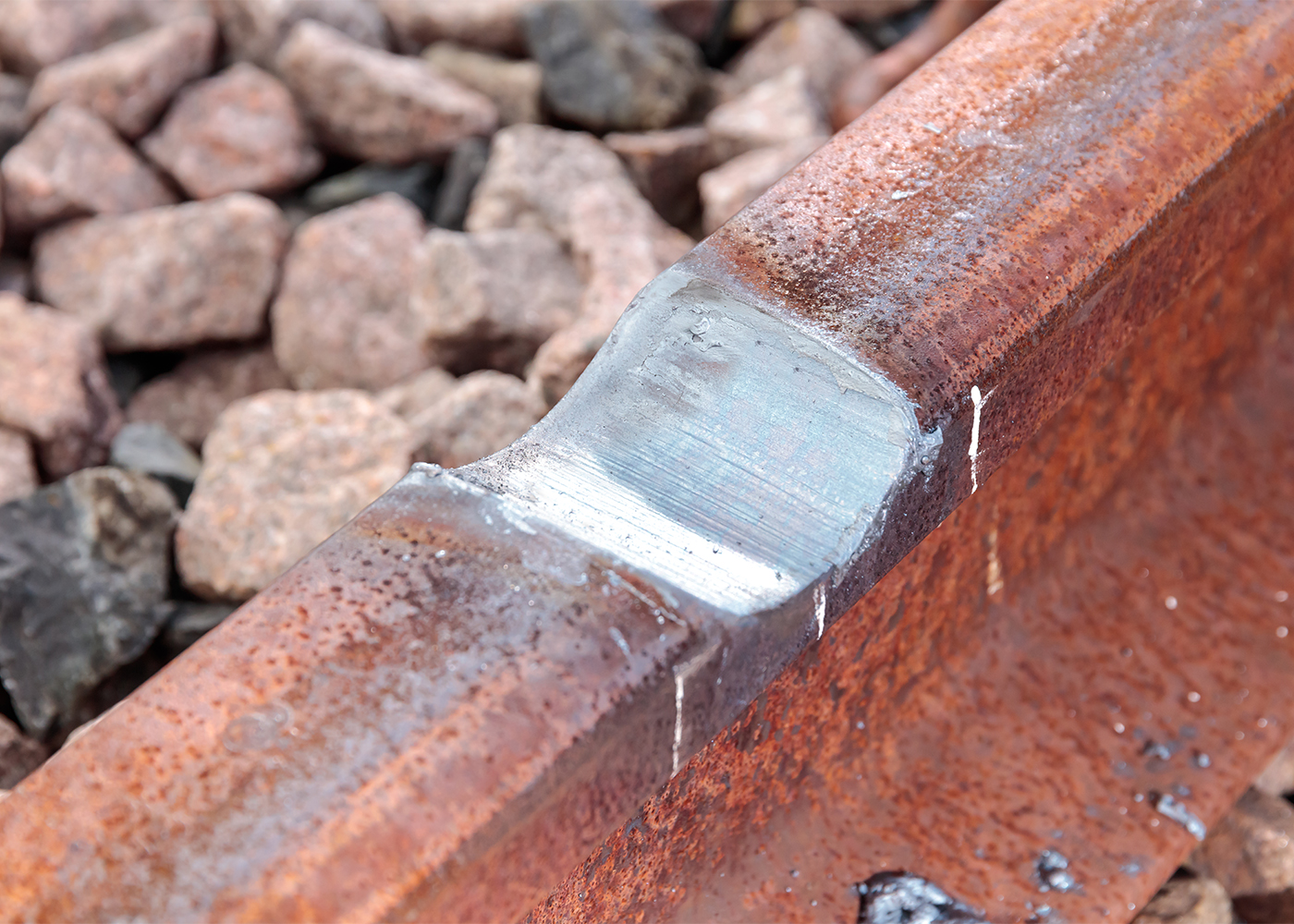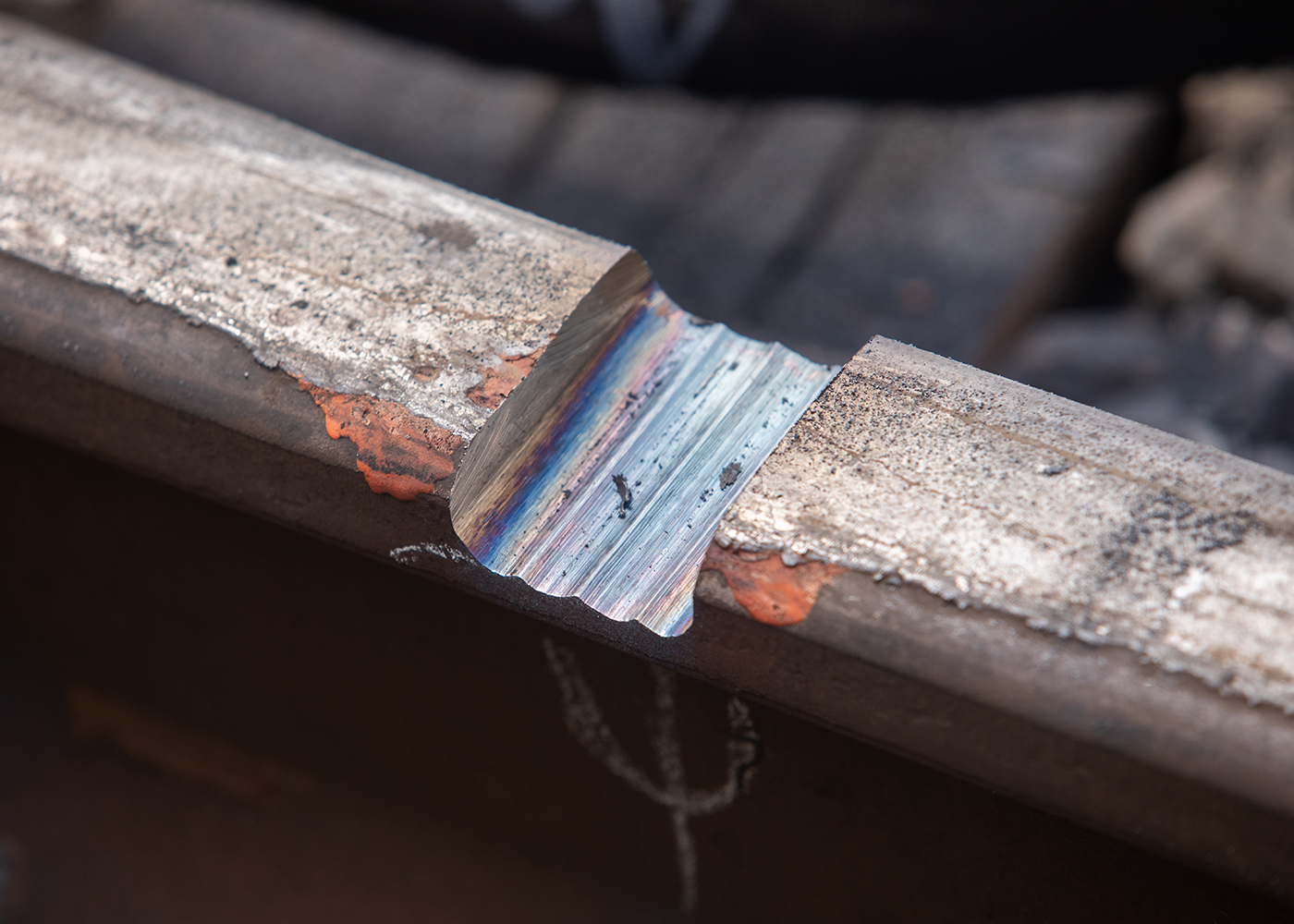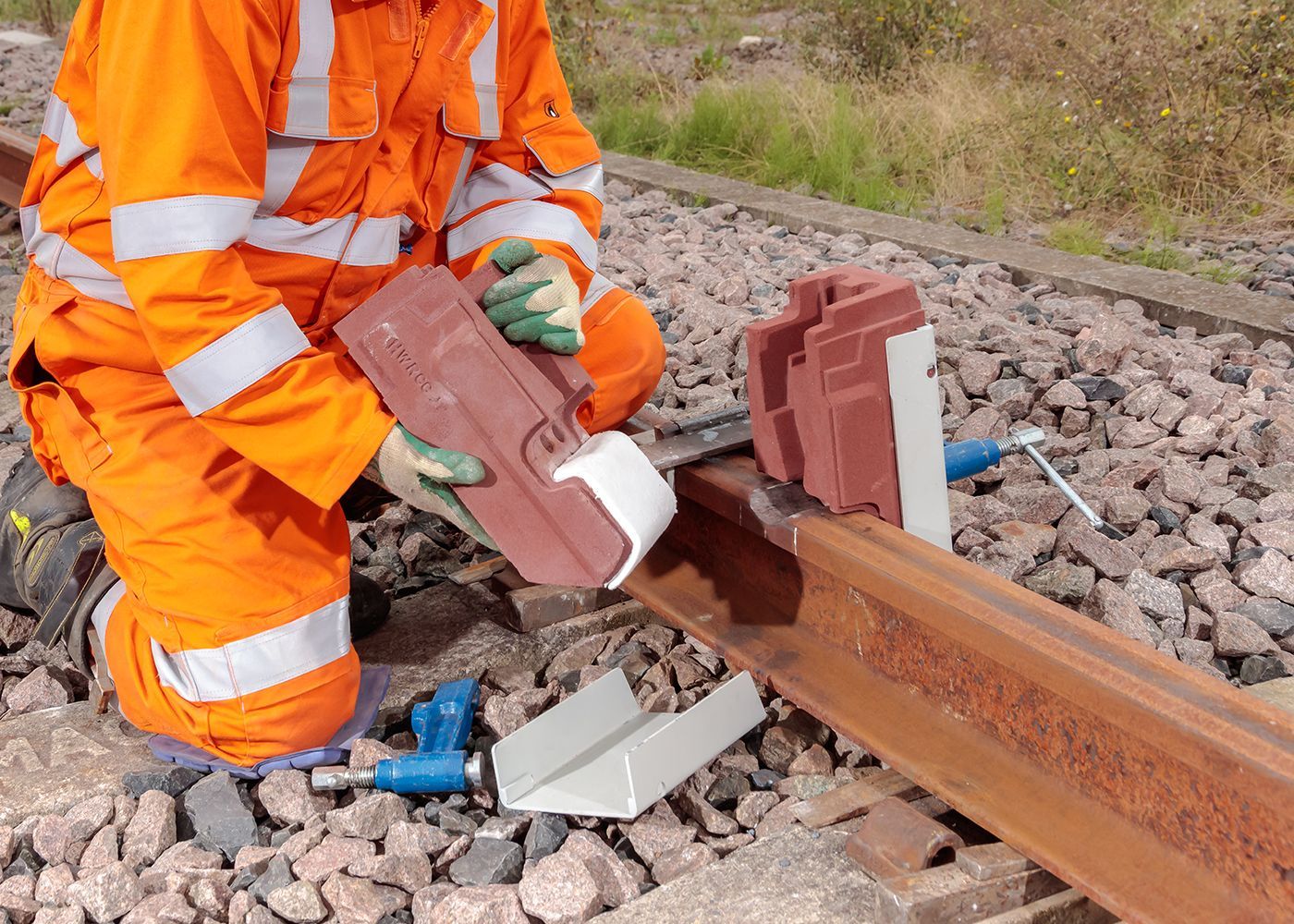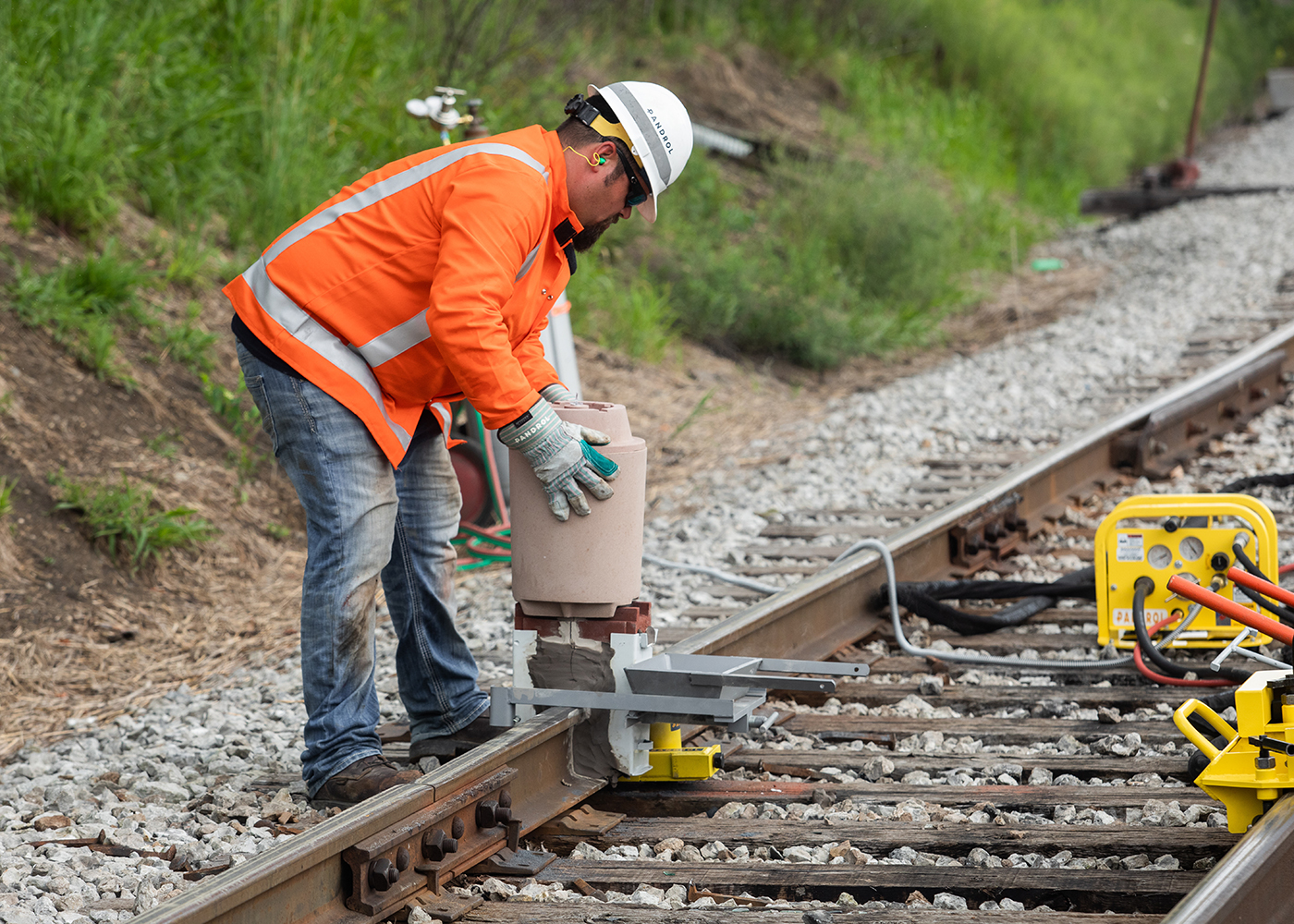Head Wash Repair Rail Welding
Pandrol are a world leader in Head Wash Repair welding, which is a cost-effective and efficient solution to repairing railhead defects and significantly decreasing the maintenance cost of modern rail networks. The process has been well established and used in the USA and Canada since 2008, the UK since 2013, and France from 2015, with specific refinements to the process for local rail profiles and network standards.
The process has been designed for repairing defects with a width between 25 mm and 90 mm, and a depth of 25 mm (depending on the rail profile). It can also be used to repair flash butt welds, which often suffer from squats. The HWR process is highly efficient compared to using plug rail, as it reduces the number of welds from two to one, offering a significant reduction in time and maintenance costs.
Pandrol’s Head Wash Repair Welding Process Explained
The aluminothermic head wash repair weld process is carried out using specially designed moulds. After unmoulding, the weld is trimmed and ground in accordance with the network specifications. It is capable of repairing railhead defects between 25mm and 90mm wide and 25mm deep (depending on the rail profile).
The head wash process can be used on both the parent rail and on electric flash butt welds, which often suffer from squats. It is also suitable for repairing transversal defects, shelling and corner gauges, and complies with the quality and safety requirements of all modern rail networks.
- Fast-track rail defect repairs with no need for destressing
- Comply with the quality and safety standards of your global rail network
- Choose a repair process that’s compatible with many weld types
Downloads
Advantages of the Pandrol Head Wash Repair Rail Welds
Simplicity
Repair head wash welds with just one weld and no need for rail destressing. The Pandrol head wash rail repair process is simple and efficient, bypassing the need for rail section replacement involved in the plug rail repair process.
Time savings
Save time compared to plug rail repair. The familiar mould design enables the welding crew to do the repair weld quickly and easily. Head wash repair welding takes just one hour rather than three or four, reducing rail system downtime and labour costs.
Safety
Promote a safer rail environment by choosing head wash repair rail welding. The process uses the same parameters and hardware as Pandrol’s signature aluminothermic welding process, which is known for its safety.
Equipment cost savings
Save the money you’d otherwise invest in training and hardware for alternative weld repair processes. The head wash weld repair process uses standard hardware and a one-shot crucible, making it easy for any welding expert to complete.
Compliance
Easily meet the compliance requirements of modern railway networks. Pandrol head wash repair welding is available for all rail grades and suitable for all environments.
Technical Capabilities of Head Wash Repair Rail Welding
Cutting and grinding
Adapt the head wash repair rail welding process to your project and equipment requirements. The slot can be created by oxy-propane cutting or grinding, as per your preference.
Optimum fusion area
Ensure total removal of the rail defect with head wash rail repair welding’s optimum size fusion area. The width is approximately 120mm with the oxy-propane cutting method, and 80mm with the grinding method. Fusion depth reaches 30mm below the slot.
Tensile stress management
Strengthen fatigue resistance while also avoiding flashing under the rail head for a cleaner weld. When using head wash repair rail welding, the felt protects this crucial location of the highest tensile stress.
Hardware
Choose a weld repair process that welding crews are already familiar with. The Pandrol head wash rail repair process uses standard hardware and a one-shot crucible, and its specially designed moulds are based on products that crews use often.
Versatility
Repair squats, transversal defects, shelling and corner gauge defects between 25mm and 90mm wide and 25 mm deep with the same process. Head wash repair is even compatible with the parent rail and electric flash butt welds.
Related products
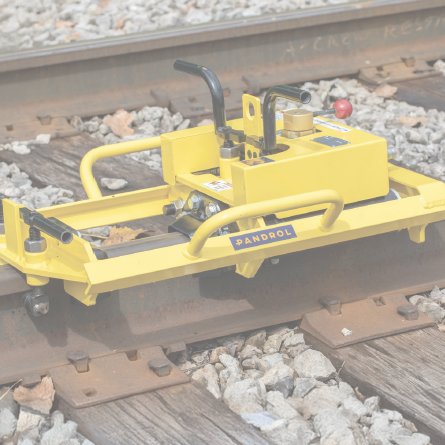
The Pandrol Hybrid Weld Shear offers a fast, safe, and portable solution for removing excess weld metal. Its lightweight frame and self-locking system ensure consistent results and secure handling in the field.
Hybrid Weld Shear (05100HY)
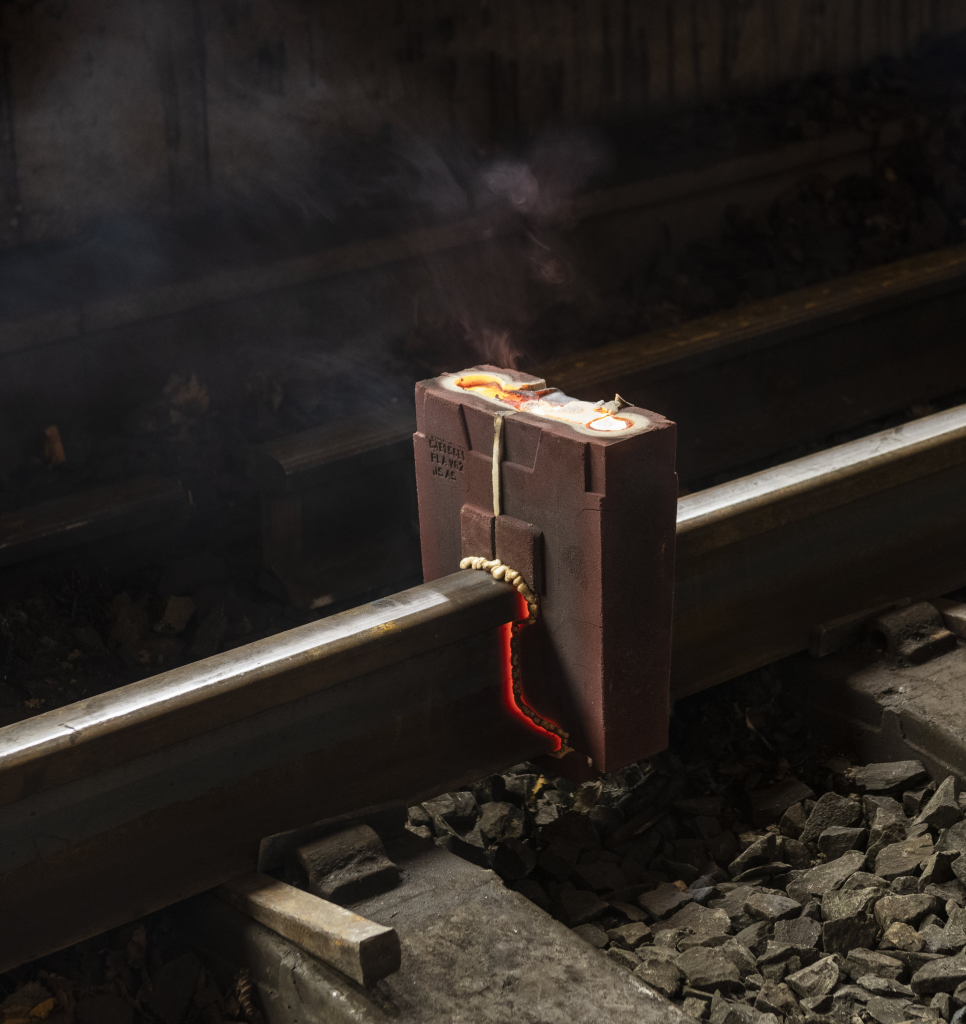
The PLA Evo is the latest optimised welding process, designed to be easy to use, improve performance and be fully compatible with the Pandrol aluminothermic welding product range.
PLA Evo
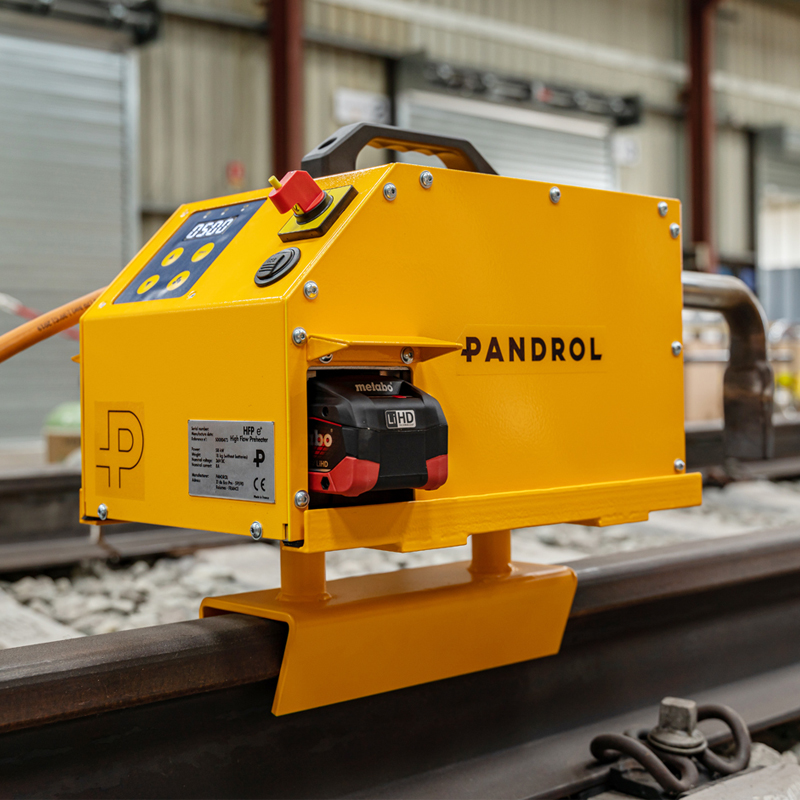
The HFP 36V is a battery-powered and fully automated preheater designed for easier and more reliable operation. Its ignition, timing, and stop functions require no manual interference or flame adjustment, making it a highly efficient tool.
High Flow Preheater 36V
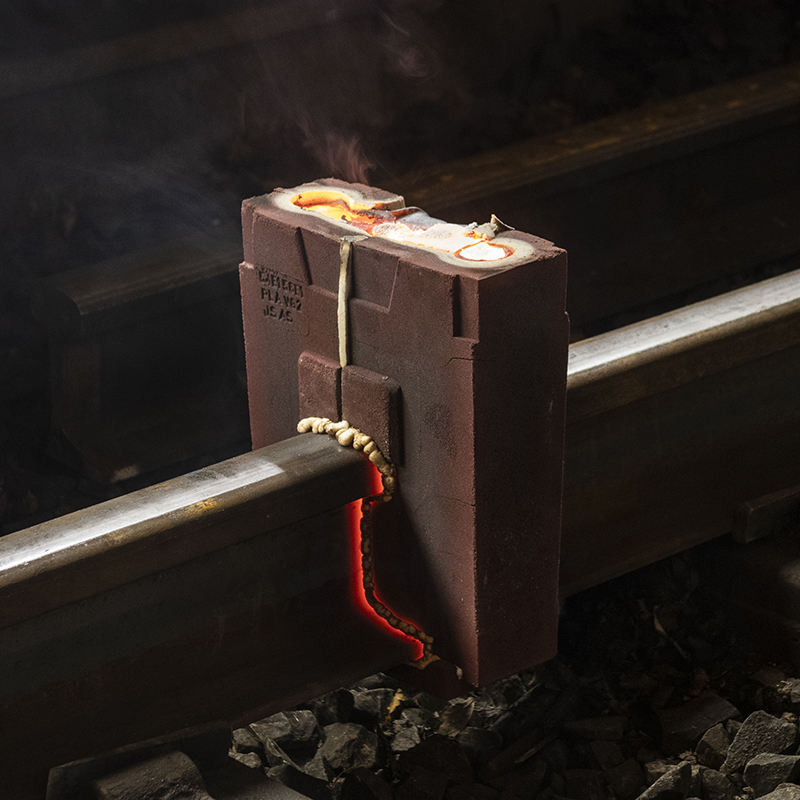
i+seal moulds are Pandrol’s newest aluminothermic welding innovation that streamlines the welding process.
i+seal moulds (formerly AutoSeal®)
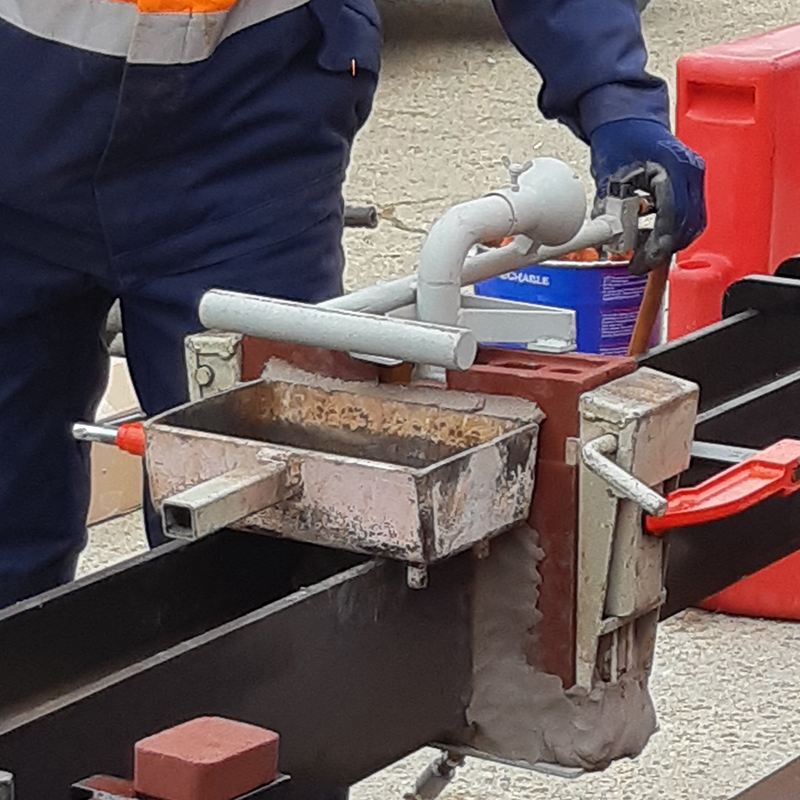
Pandrol provide world-leading aluminothermic welding solutions for customers worldwide.
Special Rail Welding
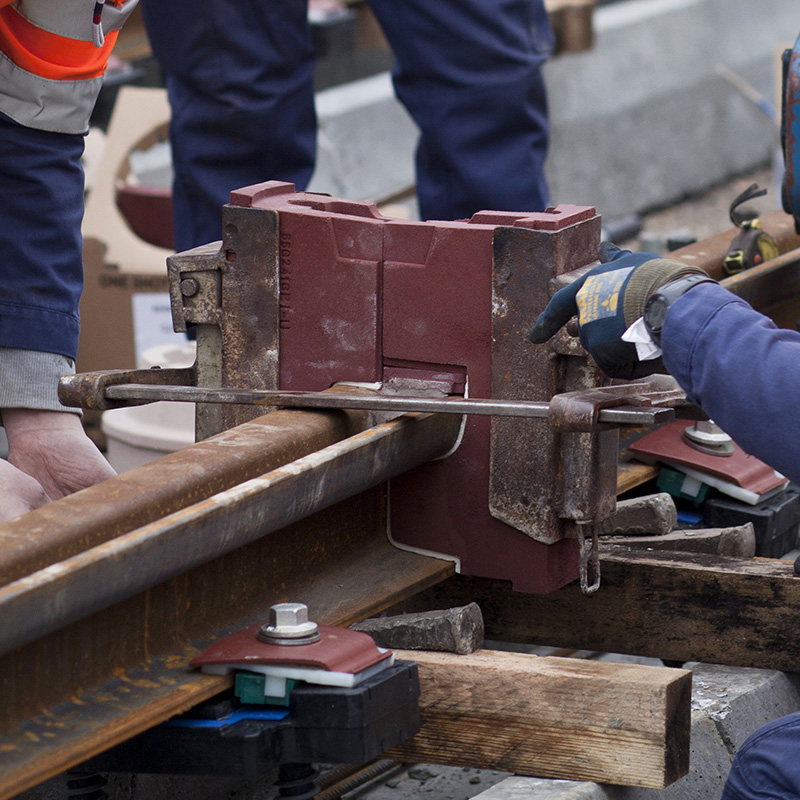
The process involves casting molten steel (produced through the reaction of iron oxide and aluminium) at a temperature exceeding 3,500 ˚F (1,950 °C) into refractory moulds designed to the rail specification.
Grooved Rail Welding
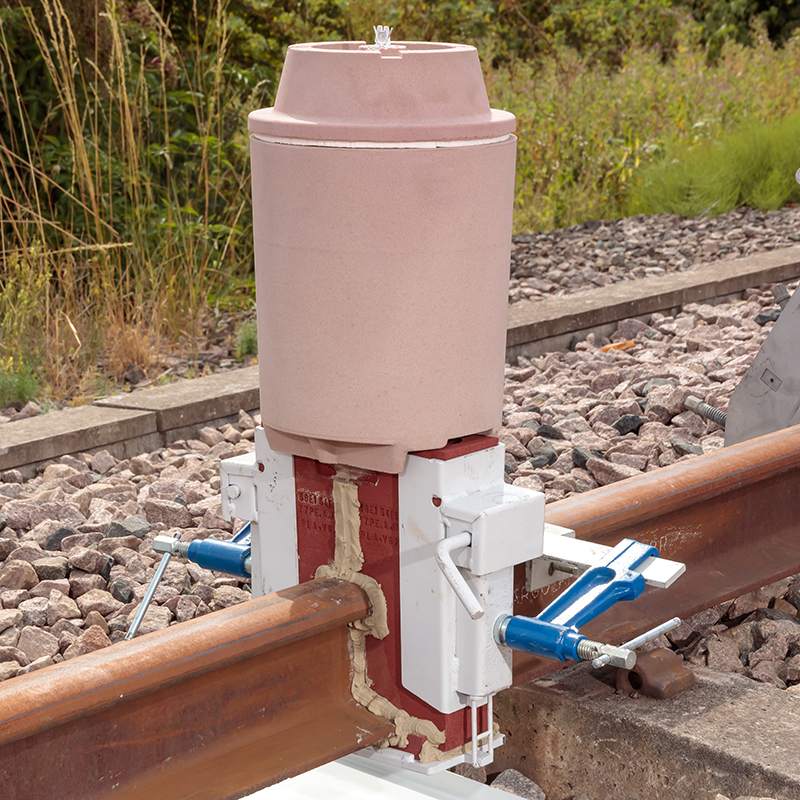
Our vignole rail welding processes equip the user to perform new welds as well as wide-gap and head-wash repairs.
Vignole Rail Welding
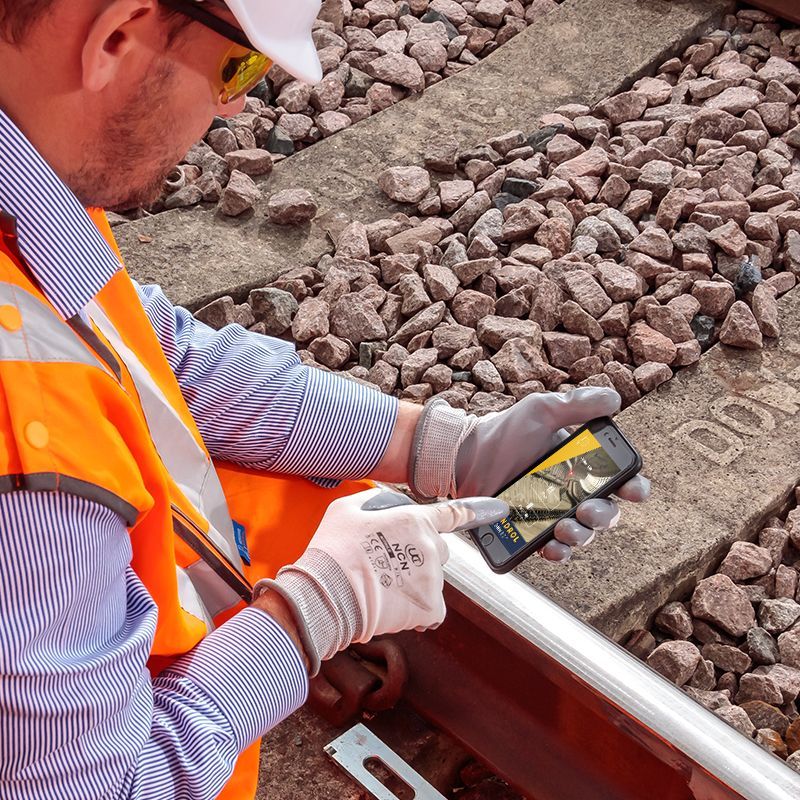
Pandrol Connect consists of three modules: a mobile version for welders to record on-site data and for welding controllers to review data, an online monitoring app to review weld information from the office, and an online administration tool to apply settings to local standards.
Pandrol Connect Welding App
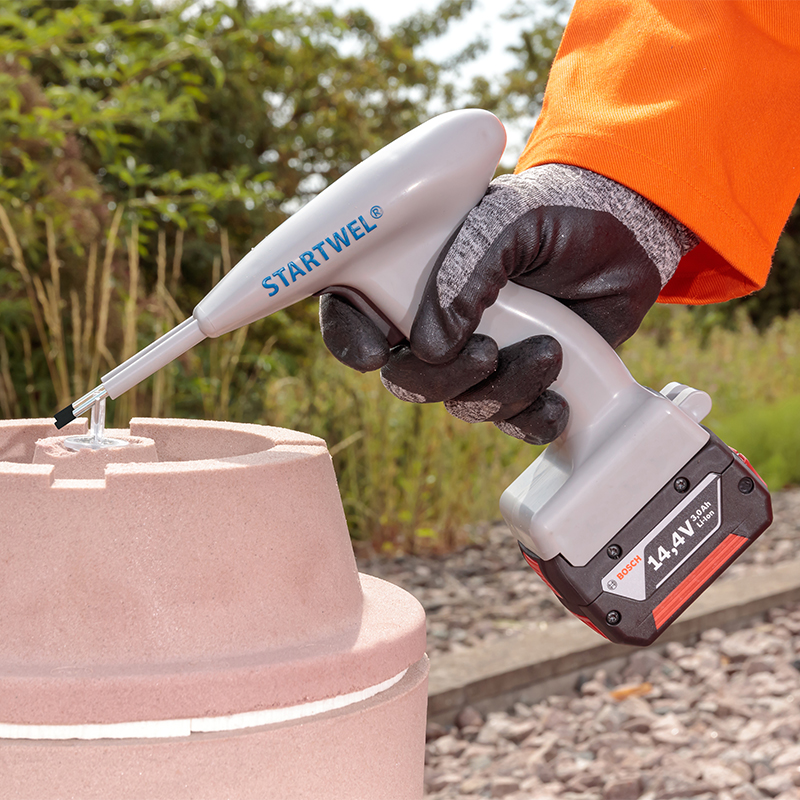
The Startwel® Ignition System, developed and patented by Pandrol, allows the welder to easily ignite the weld charge to initiate the pour process of the Pandrol aluminothermic weld, replacing the traditional “sparkler” igniter design.
